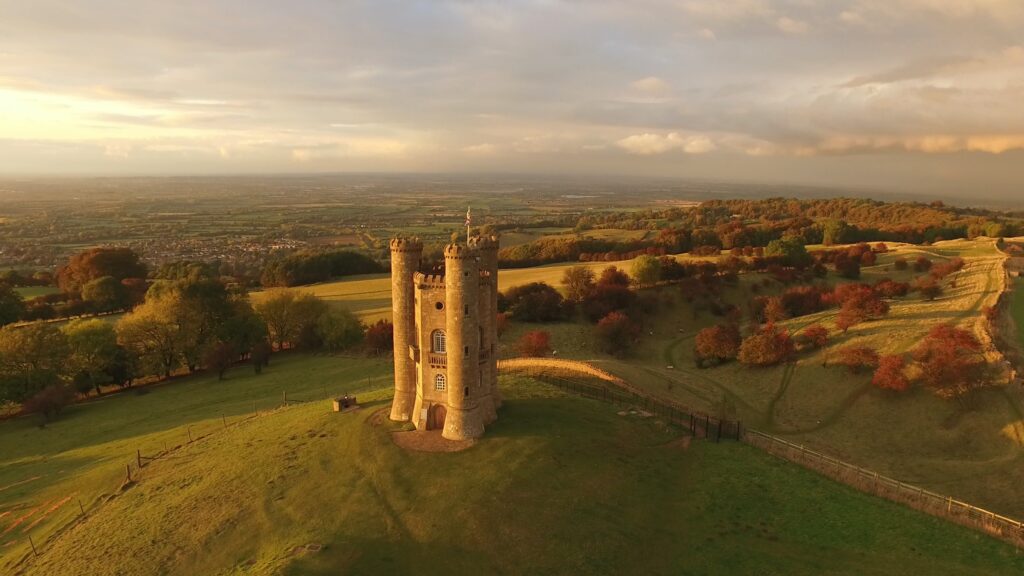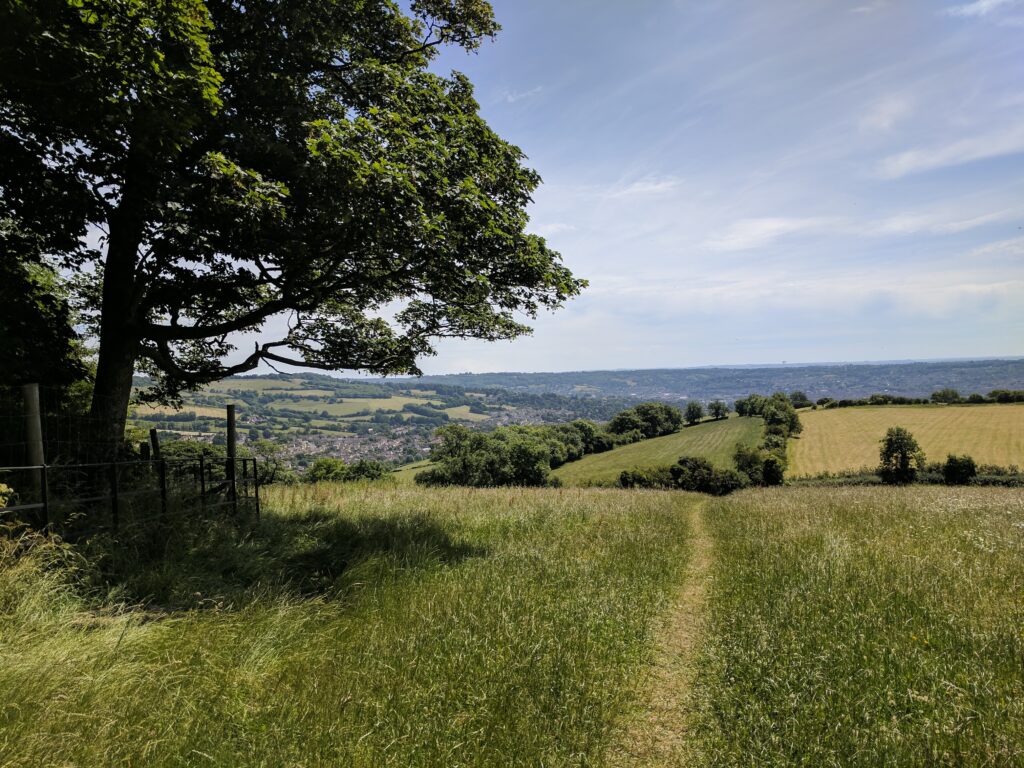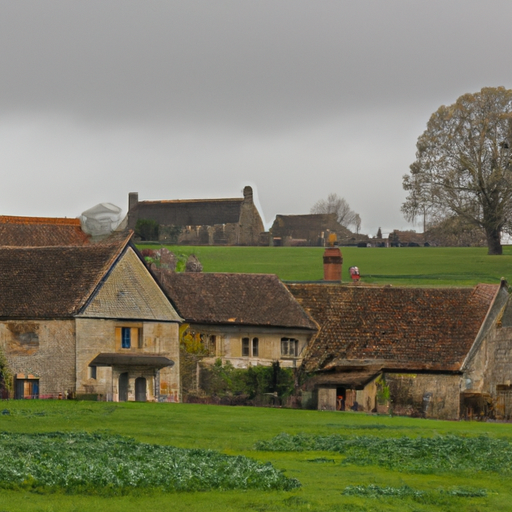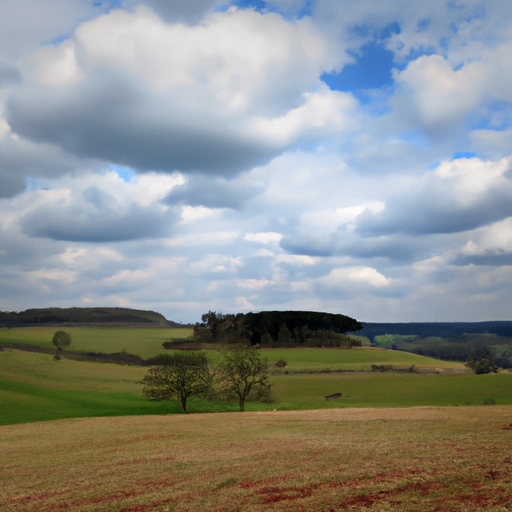Have you ever wondered about the sheer size of the Cotswolds Area of Outstanding Natural Beauty? Nestled in the heart of England, this captivating region is renowned for its picturesque landscapes and stunning countryside. From rolling hills to charming villages, the Cotswolds AONB stretches across a vast expanse, spanning over 800 square miles of breathtaking beauty. It’s no wonder that this cherished area continues to captivate locals and visitors alike with its timeless charm and natural splendor.

Location of the Cotswolds AONB
Geographical location
The Cotswolds Area of Outstanding Natural Beauty (AONB) is located in the western part of England, covering multiple counties. It is nestled between the counties of Gloucestershire and Oxfordshire, with parts extending into Warwickshire, Worcestershire, Wiltshire, and Bath and North East Somerset.
Counties covered by the Cotswolds AONB
The Cotswolds AONB encompasses a diverse range of counties, including Gloucestershire, Oxfordshire, Warwickshire, Worcestershire, Wiltshire, and Bath and North East Somerset. Each county contributes to the unique character and charm of the AONB, making it a truly special and captivating region to explore.
Size of the Cotswolds AONB
Total area
The total area covered by the Cotswolds AONB is approximately 2,038 square kilometers. This sprawling expanse of breathtaking landscapes and picturesque towns and villages makes it one of the largest AONBs in England.
Land area
Out of the total area mentioned above, the land area of the Cotswolds AONB covers around 1,504 square kilometers. This vast land area provides ample opportunities for outdoor activities, wildlife conservation, and cultural experiences within the AONB.
Protected area
The protected area of the Cotswolds AONB accounts for 79% of the total AONB area, ensuring the preservation and conservation of its natural and cultural heritage. The protected status helps maintain the scenic beauty, ecological balance, and historic significance of the region for present and future generations to enjoy.
Extent of the Cotswolds AONB
North to south
The Cotswolds AONB stretches approximately 102 kilometers from north to south, offering a wide range of landscapes to explore and enjoy. From the charming Cotswold villages near Chipping Campden in the north to the vibrant market towns near Bath in the south, the AONB showcases the beauty and diversity of the region.
East to west
In terms of the extent from east to west, the Cotswolds AONB extends approximately 40 kilometers. This horizontal span covers a variety of landscapes, including rolling hills, farmland, river valleys, and historic sites. Whether you’re exploring the eastern outskirts near Oxfordshire or venturing towards the western parts of Gloucestershire, there are plenty of hidden gems to discover.
Boundaries of the AONB
The Cotswolds AONB is delineated by its distinct boundaries, which define the protected area and ensure its management and conservation. These boundaries are carefully demarcated to encompass the significant natural, cultural, and historical features that contribute to the character of the AONB. The AONB boundary extends to areas such as the River Severn in the west and the River Thames in the east, highlighting the rich tapestry of landscapes and landmarks found within its borders.
Landscape Features
Distinctive limestone landscape
One of the defining features of the Cotswolds AONB is its distinctive limestone landscape. The region is renowned for its rolling hills and Cotswold stone villages, showcasing the natural beauty and historical significance of the area. The unique geological composition of the limestone provides a stunning backdrop for picturesque landscapes and charming architecture.
Rolling hills and valleys
The Cotswolds AONB is characterized by its rolling hills and picturesque valleys, offering breathtaking panoramic views at every turn. The undulating terrain creates a sense of tranquility and serenity, attracting visitors from far and wide seeking solace in the idyllic countryside.
Wolds and escarpments
Wolds, often called “Cotswold Wolds,” are gently sloping hills that contribute to the scenic beauty of the AONB. These wolds add depth and dimension to the landscape, creating an enchanting visual experience for visitors and residents alike. Additionally, the Cotswolds AONB features stunning escarpments, such as the famous Cotswold Edge, which offer commanding views and captivating vistas.
River valleys and waterways
The Cotswolds AONB is crisscrossed with a network of river valleys and waterways, which not only add to the natural beauty of the region but also provide important habitats for wildlife. From the meandering banks of the River Thames to the tranquil tranquility of the River Avon, these waterways enhance the overall charm and ecological richness of the AONB.
Woodland and grassland
The Cotswolds AONB boasts a diverse range of habitats, including woodlands and grasslands, which contribute to its ecological importance. Ancient beech woodlands, vibrant wildflower meadows, and rich pastures create a patchwork of colors and textures, supporting a vast array of flora and fauna. Walking through these woodlands and grasslands offers a truly immersive and therapeutic experience.

Flora and Fauna
Rich biodiversity
The Cotswolds AONB is recognized for its rich biodiversity, boasting a wide variety of plant and animal species. The diverse range of habitats within the AONB, from limestone grasslands to wetlands, supports a plethora of wildlife, making it an ideal destination for nature enthusiasts. Exploring the AONB reveals rare orchids, wildflowers, butterflies, and countless bird species thriving in their natural habitats.
Wildlife habitats
The varied landscape of the Cotswolds AONB provides numerous wildlife habitats, ensuring the survival and flourishing of a diverse range of species. Woodlands are home to mammals such as deer, foxes, and badgers, while fields and hedgerows provide a haven for small mammals like voles and shrews. Wetland areas attract water-loving birds, and the river valleys enable aquatic species such as otters and kingfishers to thrive.
Notable species
Within the Cotswolds AONB, several notable species call this region home. Here, you can witness the elusive and secretive dormouse, enjoy the sight of the stunning purple emperor butterfly, and even spot the rare and protected great crested newt. The AONB is particularly renowned for its birdlife, with the red kites soaring overhead and the distinct call of the skylark filling the air.
Human Settlements and Infrastructure
Towns and villages within the Cotswolds AONB
The Cotswolds AONB is dotted with charming towns and villages that have retained their traditional Cotswold architecture and old-world charm. From the iconic honey-colored stone buildings found in Bourton-on-the-Water and Broadway to the quaint market towns of Stow-on-the-Wold and Moreton-in-Marsh, these settlements offer a glimpse into the region’s rich history and cultural heritage. Exploring these towns and villages provides an opportunity to immerse yourself in the Cotswold way of life and experience the warm hospitality of the locals.
Roads and transportation
The AONB is well-connected and easily accessible, offering various transport options to explore the region. The main roads passing through the AONB include the A40, A44, and A46, providing convenient access to the picturesque villages and towns. Additionally, public transportation, including buses and trains, offers an eco-friendly alternative for visitors to travel within and around the Cotswolds AONB.
Historical and cultural sites
The Cotswolds AONB is steeped in history and boasts a wealth of cultural sites and landmarks. From ancient stone circles and Roman villas to medieval castles and grand manor houses, the AONB provides a fascinating glimpse into the region’s rich past. Exploring historical sites such as Sudeley Castle, Blenheim Palace, and Chedworth Roman Villa allows you to delve into the captivating stories and architecture of the Cotswolds.

Activities and Attractions
Walking and hiking
With its extensive network of footpaths and trails, the Cotswolds AONB is a haven for walkers and hikers. Whether you’re seeking a leisurely stroll through picturesque villages or a challenging hike along the Cotswold Way, there are pathways to suit all abilities and interests. Walking and hiking in the AONB allow you to immerse yourself in the tranquil countryside, breathe in the fresh air, and appreciate the natural beauty of the region.
Cycling routes
Cycling enthusiasts will find plenty of scenic routes to explore within the Cotswolds AONB. The region offers a mix of on-road and off-road cycling options, taking you through charming countryside lanes, picturesque valleys, and past iconic landmarks. Whether you prefer leisurely family rides or more challenging off-road trails, the Cotswolds AONB has something for everyone on two wheels.
Historic landmarks and stately homes
One of the main attractions of the Cotswolds AONB is its rich historical and architectural heritage. The region boasts numerous historic landmarks and stately homes, each with its own unique story to tell. From the majestic Blenheim Palace, birthplace of Sir Winston Churchill, to the charming Snowshill Manor and its eclectic collection of objects, these sites offer a glimpse into the opulent and storied past of the Cotswolds.
Farm and rural experiences
The Cotswolds AONB offers visitors the opportunity to experience the region’s rural and agricultural heritage firsthand. Farms within the AONB, many of which have been in operation for generations, open their doors to visitors, offering educational and interactive experiences. From farm tours and animal encounters to traditional agricultural practices, these experiences deepen your understanding of the rural way of life and provide an insight into the important role agriculture plays in shaping the Cotswold countryside.
Arts and culture
The Cotswolds AONB has long been a source of inspiration for artists, writers, and craftsmen. The area is renowned for its thriving arts and crafts scene, with numerous galleries, workshops, and studios showcasing the talents of local artisans. Exploring these artistic hubs and attending cultural events, such as festivals and exhibitions, allows you to immerse yourself in the vibrant arts and culture of the Cotswolds.
Conservation and Management
AONB designation
The Cotswolds AONB was designated as an Area of Outstanding Natural Beauty in 1966, recognizing its exceptional beauty and cultural significance. This prestigious status serves to protect and conserve the natural environment, wildlife habitats, and cultural heritage of the region. The AONB designation ensures that future developments and activities within the protected area are carefully managed to preserve the unique character of the Cotswolds.
Organizations involved in conservation
Several organizations play a vital role in the conservation and management of the Cotswolds AONB. The Cotswolds Conservation Board, an independent public body, works closely with local authorities, landowners, and communities to safeguard the natural and cultural heritage of the AONB. Additionally, various conservation charities, such as the National Trust and the Wildlife Trusts, actively contribute to the preservation and restoration of key habitats within the AONB.
Challenges and future plans
The conservation of the Cotswolds AONB is not without its challenges. The rapidly changing climate, increasing urbanization, and the pressures of tourism all pose significant challenges to the delicate balance of the region. However, with careful planning, community involvement, and targeted conservation efforts, the future of the Cotswolds AONB looks promising. Initiatives are underway to promote sustainable tourism, protect wildlife habitats, and engage local communities to ensure the long-term preservation of this treasured landscape.

Tourism and Economic Impact
Importance of tourism
Tourism plays a significant role in the economy of the Cotswolds AONB and the surrounding counties. The region’s natural beauty, rich heritage, and traditional charm draw tourists from all over the world, contributing to the local economy through visitor expenditures. The influx of tourists supports local businesses, including accommodations, restaurants, shops, and attractions, helping to sustain the vibrant communities within the AONB.
Job opportunities
The tourism industry in the Cotswolds AONB provides a diverse range of employment opportunities. From hospitality and catering to tour guiding and retail, there is a wide variety of jobs available that cater to the needs of both local residents and seasonal workers. The tourism industry not only generates income but also creates a sense of community and pride in showcasing the exceptional landscapes and cultural heritage of the Cotswolds.
Conservation funding
Tourism in the Cotswolds AONB also contributes to conservation funding, thereby supporting the preservation and management of the protected area. Through revenue generated from visitor attractions, admission fees, and conservation-related events, financial resources are allocated towards various conservation projects, habitat restoration, and environmental initiatives. This fosters a sustainable approach to tourism, ensuring that the natural beauty of the AONB can continue to be enjoyed by generations to come.
Conclusion
The Cotswolds Area of Outstanding Natural Beauty is a captivating and cherished region in England that showcases the very best of its natural, cultural, and historical heritage. Its vast size, distinctive limestone landscape, and rich biodiversity make it a paradise for nature enthusiasts. The charming towns and villages, along with numerous outdoor activities and attractions, provide visitors with an immersive and memorable experience. Through careful conservation and the support of tourism, the Cotswolds AONB can continue to thrive, preserving its unique character and providing economic opportunities for local communities. So, whether you’re seeking a tranquil countryside escape, an appreciation for architectural elegance, or a chance to connect with nature, the Cotswolds AONB warmly invites you to explore its enchanting landscapes and experience its timeless charm.

